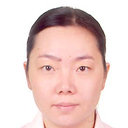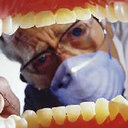Effects of Multi-glycosides of Tripterygium wilfordiion in the Treatment of Sjögren's Syndrome in the Non-obese Diabetic Mouse Model.
Mots clés
Abstrait
OBJECTIVE
To investigate the effects of the multi-glycosides of Tripterygium wilfordii (GTW) on Sjögren's syndrome (SS) in the non-obese diabetic (NOD) mouse model.
METHODS
Twenty-seven 8-week-old, female NOD mice were divided into the GTW group, the hydroxychloroquine (HCQ) group, and control (normal saline) group, and received corresponding treatment for 16 weeks. The treatment-induced changes in stimulated total saliva flow rate (STFR), level of serum anti-SSA/SSB, ratio of regulatory T (Treg) cells, histology of the submandibular gland (SMG) and the gene expression profile that is related to inflammation and autoimmunization were evaluated.
RESULTS
Compared to the untreated (control) mice, STRF, SMG index and Treg/CD4+ cell ratio were significantly higher, whereas anti-SSA, anti-SSB and lymphoid foci were remarkably lower in GTW-treated mice. HCQ-treated mice showed similar results except SMG index was not different from the untreated mice. NOD mice showed 19.03% altered gene expression with maturation from the age of 8 weeks to 24 weeks. Treatment with HCQ and GTW reduced the change in gene expression to 13.09% and 7.14%, respectively.
CONCLUSIONS
GTW is as effective as HCQ in the treatment of Sjögren's syndrome in the NOD mouse model.



